| Season Start: | 01 September 1979 | | Season End: | 12 January 1980 | | Season Length: | 20 Weeks | | Writers: | Anthony Read, Bob Baker, David Agnew, David Fisher, Douglas Adams and Terry Nation | | Directors: | Alan Bromly, Christopher Barry, Graham Williams, Ken Grieve, Kenny McBain, Michael Hayes and Pennant Roberts | | Producers: | Graham Williams and John Nathan-Turner | | Script Editor: | Douglas Adams | | Visual Effects: | Colin Mapson, Dave Havard, Ian Scoones, Mat Irvine, Peter Logan and Peter Pegrum | | Title Sequence: | Bernard Lodge | | Title Music: | Ron Grainer and the BBC Radiophonic Workshop. Arranged by Delia Derbyshire |
|
Incarnation of the Doctor: |
The Fourth Doctor
|
| Number of
Companions: |
2 |
| The
Companions: |
Romana 2 (Joins) and K9 Mk II
|
| Number of
Stories: |
6
|
| Number of
Incomplete/Missing Stories: |
1
|
| Number of
Episodes: |
26
|
| Number of
Incomplete/Missing Episodes: |
6
|
| Percentages: |
| Full Stories Held | 83% | | Episodes Held | 77% |
|
| Doctor Who Magazine Poll (1998) | | | Doctor Who Magazine Poll (2009) | | | Doctor Who Magazine Poll (2014) | |
|
 'So, the long darkness has ended. An eternity of waiting is over. The resurrection has come, as I always knew it would. Now, where are my Daleks?' 'So, the long darkness has ended. An eternity of waiting is over. The resurrection has come, as I always knew it would. Now, where are my Daleks?'
Davros
(Destiny of the Daleks) |
|
|
|
|
| |
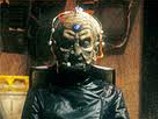 |
| Davros |
|
 Season Seventeen started so well helped by the prospect of the first story being a Dalek story which re-introduced Davros, the Daleks creator, to the show; a brand new companion, in the form of the second incarnation of Romana played by Lalla Ward; and with rival company ITV suffering from industrial action. Expectations for the whole season were high and the ratings, for the first two stories, were even higher. Season Seventeen started so well helped by the prospect of the first story being a Dalek story which re-introduced Davros, the Daleks creator, to the show; a brand new companion, in the form of the second incarnation of Romana played by Lalla Ward; and with rival company ITV suffering from industrial action. Expectations for the whole season were high and the ratings, for the first two stories, were even higher.
 The second story broadcast, "City of Death" even included location footage recorded abroad - the first time in the show. But behind the scenes, both within the Doctor Who production team and the BBC as a whole, things were not so rosy. So much so that by the end of this season the show would have a new Producer and Script Editor, two members of the crew would vow never to work on the show again and worse still what should have been a season containing the then norm of twenty six episodes over six stories would end up having only twenty episodes and five stories as the final story, "Shada" would it self suffer from industrial action – the first, and thankfully the only Doctor Who story never to be completed once it had gone into production. It’s a shame the season ended on such a low. The second story broadcast, "City of Death" even included location footage recorded abroad - the first time in the show. But behind the scenes, both within the Doctor Who production team and the BBC as a whole, things were not so rosy. So much so that by the end of this season the show would have a new Producer and Script Editor, two members of the crew would vow never to work on the show again and worse still what should have been a season containing the then norm of twenty six episodes over six stories would end up having only twenty episodes and five stories as the final story, "Shada" would it self suffer from industrial action – the first, and thankfully the only Doctor Who story never to be completed once it had gone into production. It’s a shame the season ended on such a low.
 The first story of the season was "Destiny of the Daleks" which not only had the return of the Daleks and Davros, after an absence of 4½ years, but also heralded a new actress playing the part of The Doctor’s travelling companion. When Mary Tamm, the first actress to play the part of Time Lady Romana, informed Graham Williams, during the recording of "The Armageddon Factor" that she would not be returning to Doctor Who the hunt was on to find a replacement. The first story of the season was "Destiny of the Daleks" which not only had the return of the Daleks and Davros, after an absence of 4½ years, but also heralded a new actress playing the part of The Doctor’s travelling companion. When Mary Tamm, the first actress to play the part of Time Lady Romana, informed Graham Williams, during the recording of "The Armageddon Factor" that she would not be returning to Doctor Who the hunt was on to find a replacement.
 Tom Baker was keen to have no companion at all but then it was announced that Lalla Ward, who had actually first appeared in the show as Princess Astra in "The Armageddon Factor" would be Mary Tamm’s replacement. And so for the first time a travelling companion underwent a regeneration as Lalla Ward became the second incarnation of Romana. Having studied at the Central School of Speech and Drama, Lalla Ward (who is actually the Honourable Sarah Ward and the daughter of the seventh Viscount Bangor) had considerable experience on stage, television and film, including programmes such as The Duchess of Duke Street, The Professionals and Armchair Theatre. She immediately became a popular and well liked member of the cast, especially by Tom Baker, and by the fans. Tom Baker was keen to have no companion at all but then it was announced that Lalla Ward, who had actually first appeared in the show as Princess Astra in "The Armageddon Factor" would be Mary Tamm’s replacement. And so for the first time a travelling companion underwent a regeneration as Lalla Ward became the second incarnation of Romana. Having studied at the Central School of Speech and Drama, Lalla Ward (who is actually the Honourable Sarah Ward and the daughter of the seventh Viscount Bangor) had considerable experience on stage, television and film, including programmes such as The Duchess of Duke Street, The Professionals and Armchair Theatre. She immediately became a popular and well liked member of the cast, especially by Tom Baker, and by the fans.
 A different actress playing Romana was not the only change that occurred within the regular cast as the voice behind K9 also underwent a slight change. This was due to John Leeson, who had provided the voice of K9, since the introduction of this robotic dog in the 1977 story "The Invisible Enemy", deciding to leave the show at the end of Season Sixteen. (Though John Leeson would return during Season Eighteen). And so for this season only (and actually for only "The Creature from the Pit", "Nightmare of Eden" and "The Horns of Nimon") the voice of K9 was provided by David Brierley. Having mostly worked in theatre, David Brierley had also worked on radio and television, including Coronation Street and Armchair Theatre. A different actress playing Romana was not the only change that occurred within the regular cast as the voice behind K9 also underwent a slight change. This was due to John Leeson, who had provided the voice of K9, since the introduction of this robotic dog in the 1977 story "The Invisible Enemy", deciding to leave the show at the end of Season Sixteen. (Though John Leeson would return during Season Eighteen). And so for this season only (and actually for only "The Creature from the Pit", "Nightmare of Eden" and "The Horns of Nimon") the voice of K9 was provided by David Brierley. Having mostly worked in theatre, David Brierley had also worked on radio and television, including Coronation Street and Armchair Theatre.
 Even though the majority of the cast and crew enjoyed recording the location footage for "City of Death" in Paris one major upset occurred between Lalla Ward and Costume Designer Doreen James – resulting in Doreen James’ involvement in the show ending abruptly. This though was not the only unpleasantness that Producer Graham Williams had to deal with during this season. He also had to contend with Alan Bromly, the Director of "Nightmare of Eden", walking out after a number of heated disagreements with Tom Baker. Even though Alan Bromly is credited with directing this story Graham Williams ended up having to complete the Director’s duties. Even though the majority of the cast and crew enjoyed recording the location footage for "City of Death" in Paris one major upset occurred between Lalla Ward and Costume Designer Doreen James – resulting in Doreen James’ involvement in the show ending abruptly. This though was not the only unpleasantness that Producer Graham Williams had to deal with during this season. He also had to contend with Alan Bromly, the Director of "Nightmare of Eden", walking out after a number of heated disagreements with Tom Baker. Even though Alan Bromly is credited with directing this story Graham Williams ended up having to complete the Director’s duties.
 This final upset helped Graham Williams to make up his mind to leave Doctor Who at the end of this season. He had endured three punishing years on the show and so had finally had enough. Graham Williams would continue to work as a producer through much of the Eighties on shows like Supergran and Tales of the Unexpected. He also wrote a Doctor Who story entitled "The Nightmare Fair" for the abortive original version of Doctor Who’s Season Twenty Three, which he subsequently novelised for Target Books. He passed away in 1990. This final upset helped Graham Williams to make up his mind to leave Doctor Who at the end of this season. He had endured three punishing years on the show and so had finally had enough. Graham Williams would continue to work as a producer through much of the Eighties on shows like Supergran and Tales of the Unexpected. He also wrote a Doctor Who story entitled "The Nightmare Fair" for the abortive original version of Doctor Who’s Season Twenty Three, which he subsequently novelised for Target Books. He passed away in 1990.
 Also leaving at the end of this season was Script Editor Douglas Adams when he decided that he was happier doing his own writing rather than cultivating other people’s scripts. Furthermore, five additional episodes of his radio series "The Hitchhiker's Guide to the Galaxy" had now been commissioned leaving him with no time for his duties on Doctor Who. Douglas Adams went on to great fame thanks to "The Hitchhiker's Guide to Galaxy". He passed away in 2001. Also leaving at the end of this season was Script Editor Douglas Adams when he decided that he was happier doing his own writing rather than cultivating other people’s scripts. Furthermore, five additional episodes of his radio series "The Hitchhiker's Guide to the Galaxy" had now been commissioned leaving him with no time for his duties on Doctor Who. Douglas Adams went on to great fame thanks to "The Hitchhiker's Guide to Galaxy". He passed away in 2001.
 The final story of this season should have been the six part story "Shada" but as events within the BBC spiralled out of control during the final months of 1979 Graham Williams was forced to finally concede that his planned epic Time Lord story would never make it to our screens and so on the 12th January 1980 the rather lack-lustre "The Horns of Nimon" became the final Graham Williams/Douglas Adams era story. The final story of this season should have been the six part story "Shada" but as events within the BBC spiralled out of control during the final months of 1979 Graham Williams was forced to finally concede that his planned epic Time Lord story would never make it to our screens and so on the 12th January 1980 the rather lack-lustre "The Horns of Nimon" became the final Graham Williams/Douglas Adams era story.
 The person replacing Graham Williams, as Producer, would be John Nathan-Turner (who had been Production Unit Manager since the 1977 story "The Talons of Weng-Chiang"). John Nathan-Turner had big plans for the show some of which would be evident as early as the first story of the following season. The person replacing Graham Williams, as Producer, would be John Nathan-Turner (who had been Production Unit Manager since the 1977 story "The Talons of Weng-Chiang"). John Nathan-Turner had big plans for the show some of which would be evident as early as the first story of the following season.
 Therefore "The Horns of Nimon" marked the end of several eras: it featured the final use of the original 1963 arrangement of the "Doctor Who Theme", (which had been revised slightly over the years, notably in 1967, but remained essentially Delia Derbyshire’s version until this point); the last use of the diamond-shaped logo and ‘tunnel’ opening sequence by Bernard Lodge, which had been in place (with some modifications) since the 1973/74 Third Doctor story "The Time Warrior" and the last appearance of the image of Tom Baker, now close to six years old, in the opening credits. Therefore "The Horns of Nimon" marked the end of several eras: it featured the final use of the original 1963 arrangement of the "Doctor Who Theme", (which had been revised slightly over the years, notably in 1967, but remained essentially Delia Derbyshire’s version until this point); the last use of the diamond-shaped logo and ‘tunnel’ opening sequence by Bernard Lodge, which had been in place (with some modifications) since the 1973/74 Third Doctor story "The Time Warrior" and the last appearance of the image of Tom Baker, now close to six years old, in the opening credits.
 As already mentioned the beginning of this season achieved very high viewing figures – all-be-it thanks to ITV being off the air. Both "Destiny of the Daleks" and "City of Death" were watched by the most number of viewers (13.5 million and 14.5 million respectively). This made "City of Death" the most watched story of the whole show (including to-date the revived series) and the fourth episode of "City of Death" was watched by a staggering 16.1 million viewers – making it the highest watched episode of all time. Due to ITV managing to come to agreement with its unions and the fact that the remaining stories of this season were unfortunately not being of the same calibre as those at the beginning the viewing figures slowly dropped as the season progressed. As already mentioned the beginning of this season achieved very high viewing figures – all-be-it thanks to ITV being off the air. Both "Destiny of the Daleks" and "City of Death" were watched by the most number of viewers (13.5 million and 14.5 million respectively). This made "City of Death" the most watched story of the whole show (including to-date the revived series) and the fourth episode of "City of Death" was watched by a staggering 16.1 million viewers – making it the highest watched episode of all time. Due to ITV managing to come to agreement with its unions and the fact that the remaining stories of this season were unfortunately not being of the same calibre as those at the beginning the viewing figures slowly dropped as the season progressed.
 As well as containing the most watched story and episode, having the first story recorded abroad, and the unfortunate accolade of the first story not to be broadcast, this season also marked a number of key milestones for Tom Baker. As of "The Creature from the Pit" he had appeared in the most number of episodes (136) and as of "Destiny of the Daleks" the most number of stories (30) and the longest time in the show (5¾ years) than any other actor, playing the part of The Doctor, in the show. No wonder he has become the most popular incarnation of The Doctor. As well as containing the most watched story and episode, having the first story recorded abroad, and the unfortunate accolade of the first story not to be broadcast, this season also marked a number of key milestones for Tom Baker. As of "The Creature from the Pit" he had appeared in the most number of episodes (136) and as of "Destiny of the Daleks" the most number of stories (30) and the longest time in the show (5¾ years) than any other actor, playing the part of The Doctor, in the show. No wonder he has become the most popular incarnation of The Doctor.
 Thanks, in part to "City of Death" this season has remained a popular season and its end is seen by many fans as an important turning point in the show’s history. John Nathan-Turner’s long rein as the final Producer, of the original series, and the final season of Tom Baker’s era was about to start... Thanks, in part to "City of Death" this season has remained a popular season and its end is seen by many fans as an important turning point in the show’s history. John Nathan-Turner’s long rein as the final Producer, of the original series, and the final season of Tom Baker’s era was about to start...
|
|
|
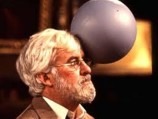 |
| Professor Chronotis |
|
 Thanks to John Nathan-Turner it became possible, in 1992, to at last watch an official release on VHS of the unfinished "Shada". For the majority of fans this was the first time they were able to have a glimpse of this story as it could have been after a delay of more than twelve years. Thanks to John Nathan-Turner it became possible, in 1992, to at last watch an official release on VHS of the unfinished "Shada". For the majority of fans this was the first time they were able to have a glimpse of this story as it could have been after a delay of more than twelve years.
 Up until 1992 it would have only been possible to view the short clips that were used in the Twentieth Anniversary special, "The Five Doctors", when Tom Baker had declined to participate in that particular story, or the unofficial compilation that was prepared by a number of Doctor Who fans and debuted at the Panopticon 5 convention in September 1983. Up until 1992 it would have only been possible to view the short clips that were used in the Twentieth Anniversary special, "The Five Doctors", when Tom Baker had declined to participate in that particular story, or the unofficial compilation that was prepared by a number of Doctor Who fans and debuted at the Panopticon 5 convention in September 1983.
 And so thanks to this official video release we can now watch the brilliant location footage filmed around Cambridge. This includes the famous chase scene with Tom Baker peddling furiously through the streets of Cambridge and more importantly how the scenes used in "The Five Doctors" should have been used had "Shada" made it to our television screens. And so thanks to this official video release we can now watch the brilliant location footage filmed around Cambridge. This includes the famous chase scene with Tom Baker peddling furiously through the streets of Cambridge and more importantly how the scenes used in "The Five Doctors" should have been used had "Shada" made it to our television screens.
 Of the stories broadcast "City of Death" is the one to watch from this season. Filmed in Paris there are, like "Shada", some wonderful location footage. But this time in and around the capital of France – taking in some very famous, and not so famous, Parisian landmarks. One scene stands out in particular. This the comical sequence at the very end of the story where The Doctor and Romana are one minute at the top of the famous tower saying good-bye to Duggan and the next they are at the bottom waving back up to him. Of the stories broadcast "City of Death" is the one to watch from this season. Filmed in Paris there are, like "Shada", some wonderful location footage. But this time in and around the capital of France – taking in some very famous, and not so famous, Parisian landmarks. One scene stands out in particular. This the comical sequence at the very end of the story where The Doctor and Romana are one minute at the top of the famous tower saying good-bye to Duggan and the next they are at the bottom waving back up to him.
 Another memorable scene, again from "City of Death", is when the TARDIS is mistaken for an exhibit in an art gallery. This scene includes the well-known actress Eleanor Bron and Monty Python comedian John Cleese, playing the part of the art critics. The comments they make are uninterrupted as the continue to praise the TARDIS unphased by the sudden arrival of The Doctor, Romana and Duggan who then enter the TARDIS which then dematerialises before there very eyes. Another memorable scene, again from "City of Death", is when the TARDIS is mistaken for an exhibit in an art gallery. This scene includes the well-known actress Eleanor Bron and Monty Python comedian John Cleese, playing the part of the art critics. The comments they make are uninterrupted as the continue to praise the TARDIS unphased by the sudden arrival of The Doctor, Romana and Duggan who then enter the TARDIS which then dematerialises before there very eyes.
|
|
|
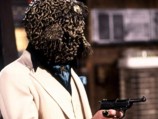 |
| Scaroth of the Jagaroth |
|
 The low point of the season must go to the final three stories "The Creature from the Pit", "Nightmare of Eden" and especially to "The Horns of Nimon". While all three stories suffered from a combination of weak scripts and poor acting the last two stories also suffered due to severe budget-restrictions in order to have money left over for the season finale, "Shada" and the Paris filming in "City of Death". The low point of the season must go to the final three stories "The Creature from the Pit", "Nightmare of Eden" and especially to "The Horns of Nimon". While all three stories suffered from a combination of weak scripts and poor acting the last two stories also suffered due to severe budget-restrictions in order to have money left over for the season finale, "Shada" and the Paris filming in "City of Death".
 But what really lets these stories down is in all of them the monsters were poorly rendered. The Mandrels in "Nightmare of Eden" have even been described as ‘cute rejects from The Muppet Show’ by The Doctor Who Appreciation Society. While the Nimon in "The Horns of Nimon" can be best likened to bulls on two legs. But what really lets these stories down is in all of them the monsters were poorly rendered. The Mandrels in "Nightmare of Eden" have even been described as ‘cute rejects from The Muppet Show’ by The Doctor Who Appreciation Society. While the Nimon in "The Horns of Nimon" can be best likened to bulls on two legs.
 Regardless of how poor these monsters were if there was an award for the Worst Doctor Who Monster Of All Timethen it would have to go to Erato, the ambassador from the planet Tythonus seen in "The Creature from the Pit". Even though attempts were made to make Erato less phallic unfortunately the production team did not succeed. And of course then there is the one famous scene in which The Doctor tries to communicate with Erato. The least said about that the better… Regardless of how poor these monsters were if there was an award for the Worst Doctor Who Monster Of All Timethen it would have to go to Erato, the ambassador from the planet Tythonus seen in "The Creature from the Pit". Even though attempts were made to make Erato less phallic unfortunately the production team did not succeed. And of course then there is the one famous scene in which The Doctor tries to communicate with Erato. The least said about that the better…
 As to the high points of this season, despite the enhanced viewing figures for the first two stories being caused by a strike within ITV forcing this rival station off-air, both "Destiny of the Daleks" and "City of Death" are considered to be good stories in their own right. The fact that "City of Death" became the most watched story of all time does not mean that the proceeding story "Destiny of the Daleks" is any less important to the show. As to the high points of this season, despite the enhanced viewing figures for the first two stories being caused by a strike within ITV forcing this rival station off-air, both "Destiny of the Daleks" and "City of Death" are considered to be good stories in their own right. The fact that "City of Death" became the most watched story of all time does not mean that the proceeding story "Destiny of the Daleks" is any less important to the show.
 "Destiny of the Daleks" re-introduces the Daleks and their creator, the evil scientist Davros, after an absence of 4½ years. Classic scenes are a plenty including Davros’ reactivation and of course The Doctor’s failed attempt to reason with Davros. This story though is mainly remembered for introducing Lalla Ward to role as the second incarnation of Romana – with its amusing regeneration scene. This scene may have proved to be controversial with many fans due to its light-hearted approach to the concept of regeneration, but thankfully Romana chooses the right body and costume in the end. "Destiny of the Daleks" re-introduces the Daleks and their creator, the evil scientist Davros, after an absence of 4½ years. Classic scenes are a plenty including Davros’ reactivation and of course The Doctor’s failed attempt to reason with Davros. This story though is mainly remembered for introducing Lalla Ward to role as the second incarnation of Romana – with its amusing regeneration scene. This scene may have proved to be controversial with many fans due to its light-hearted approach to the concept of regeneration, but thankfully Romana chooses the right body and costume in the end.
 "Destiny of the Daleks" is however, over shadowed by the fantastic "City of Death". This is a true high point of the season and of the whole show. Being the first story to include location footage taken abroad really paid off. Containing a well thought out plot credit must go to all who were involved in its making. A truly classic Doctor Who story that surely will continue to be voted into the top ten of any poll for the most liked Doctor Who story. "Destiny of the Daleks" is however, over shadowed by the fantastic "City of Death". This is a true high point of the season and of the whole show. Being the first story to include location footage taken abroad really paid off. Containing a well thought out plot credit must go to all who were involved in its making. A truly classic Doctor Who story that surely will continue to be voted into the top ten of any poll for the most liked Doctor Who story.
|
|
|
|
|
| |
The Firsts:
 The introduction of the regenerated companion Romana played by Lalla Ward. (Destiny of the Daleks) The introduction of the regenerated companion Romana played by Lalla Ward. (Destiny of the Daleks)
 The first story featuring the Daleks, and the first return of Davros, since the 1975 story "Genesis of the Daleks". (Destiny of the Daleks) The first story featuring the Daleks, and the first return of Davros, since the 1975 story "Genesis of the Daleks". (Destiny of the Daleks)
 Douglas Adams' first credited involvement in the show as Script Editor. (Destiny of the Daleks) Douglas Adams' first credited involvement in the show as Script Editor. (Destiny of the Daleks)
 The first Doctor Who story to be watched by more than 14 million viewers. (City of Death) The first Doctor Who story to be watched by more than 14 million viewers. (City of Death)
 The first story to feature K9 voiced by David Brierly. (The Creature from the Pit) The first story to feature K9 voiced by David Brierly. (The Creature from the Pit)
 The first story to be halted mid production and so not broadcast (Shada) The first story to be halted mid production and so not broadcast (Shada)
|
| |
The Lasts (Subject to Future Stories):
| |
| Doctor Who CMS Magazine (In Vision) | Issue 45: Season 17 Overview - (Released: August 1993) | | Doctor Who Magazine - Episode Guide | Issue 155 - (Released: December 1989) | | Doctor Who Magazine - Article | Issue 290 - (Released: May 2000) | | Doctor Who Magazine - Countdown to 50 | Issue 446 - (Released: May 2012) |
| Title | Release Date (UK) | Format | Source | Companions | | The Romance of Crime | January 1995 | Novel | The Missing Adventures | K9 and Romana | | The English Way of Death | March 1996 | Novel | The Missing Adventures | K9 and Romana | | The Well-Mannered War | April 1997 | Novel | The Missing Adventures | K9 and Romana | | Glass | March 1998 | Short Story | Short Trips | Romana | | Return of the Spiders | March 1999 | Short Story | More Short Trips | K9 and Romana | | Special Occasions: 2. Do You Love Anyone Enough? | March 2000 | Short Story | Short Trips and Side Steps | Romana | | Special Occasions: 1. The Not-So-Sinister Sponge | March 2000 | Short Story | Short Trips and Side Steps | K9 and Romana | | Special Occasions: 3. Better Watch Out, Better Take Care | March 2000 | Short Story | Short Trips and Side Steps | Romana | | Special Occasions: 4. Playing with Toys | March 2000 | Short Story | Short Trips and Side Steps | Romana | | Festival of Death | September 2000 | Novel | The Past Doctors Stories | K9 and Romana | | The Lying Old Witch in the Wardrobe | March 2003 | Short Story | The Big Finish Short Trips 2: Companions | Romana | | Doing Time | December 2003 | Short Story | The Big Finish Short Trips 5: Steel Skies | Romana | | Present Tense | December 2004 | Short Story | The Big Finish Short Trips 11: A Christmas Treasury | K9 and Romana | | The Clanging Chimes of Doom | December 2004 | Short Story | The Big Finish Short Trips 11: A Christmas Treasury | K9 and Romana | | The Little Things | December 2004 | Short Story | The Big Finish Short Trips 11: A Christmas Treasury | K9 and Romana | | Into the Silent Land | March 2006 | Short Story | The Big Finish Short Trips 16: Farewells | Romana | | The Beautiful People | February 2007 | Audio | The Big Finish Audio Stories (Companion Chronicles) | Romana | | The End of Now | June 2007 | Short Story | The Big Finish Short Trips 20: Destination Prague | Romana | | All Snug in Their Beds | December 2007 | Short Story | The Big Finish Short Trips 22: The Ghosts of Christmas | K9 and Romana | | Breadcrumbs | July 2008 | Short Story | The Big Finish Short Trips 25: Transmissions | Romana | | The Pyralis Effect | October 2009 | Audio | The Big Finish Audio Stories (Companion Chronicles) | Romana |
|
|
| |
The Doctor and Companions| | 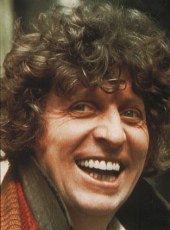 | | The Fourth Doctor |
|
| | | | |
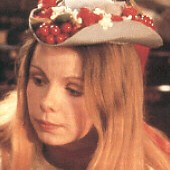 | | Romana 2 |
| |  | | K9 Mk II |
| | | | |
|
On Release | | The Collection Season 17 Limited Edition Blu-Ray Cover |

VIDEO |
| | 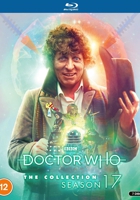 | | The Collection Season 17 Standard Edition Blu-Ray Cover |

VIDEO |
| | | | |
Magazines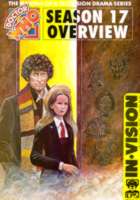 | | Doctor Who CMS Magazine (In Vision): Issue 45: Season 17 Overview |
| 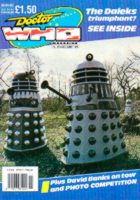 | | Doctor Who Magazine - Episode Guide: Issue 155 |
|  | | Doctor Who Magazine - Article: Issue 290 |
|  | | Doctor Who Magazine - Countdown to 50: Issue 446 |
| | | | |
|
|
|
| |
| |
|
| |
| |
|
| Doctor Who is the copyright of the British Broadcasting
Corporation. No infringements intended. This site is not endorsed by the BBC or
any representatives thereof. |
|